BELLOTTO, RUBENS, GAINSBOROUGH, GUARDI &
BREUGHEL THE YOUNGER
Including Property from The Alfred Beit Foundation
Lead Christie’s Old Master & British Paintings Evening Sale,
London, 9 July 2015
Christie’s Old Master & British Paintings Evening Sale in London on Thursday 9 July will offer an exceptional selection of pictures from private collections, with emphasis on rarity, importance and provenance. Many of the highlights in the sale have not been seen on the market for generations. The sale is led by a masterpiece by Bernardo Bellotto (1721-1780), Dresden from the right bank of the Elbe above the Augustus Bridge, one of the last great views of the city by this artist still remaining in private hands (estimate: £8-12 million).
The sale also includes six carefully selected paintings from The Alfred Beit Foundation with two superb panels by Rubens - Head of a bearded man (estimate: £2-3 million), and Venusand Jupiter (estimate: £1.2-1.8 million); and one of the greatest Kermesse scenes by David Teniers the Younger (estimate: £1.2-1.8 million).
Other sale highlights are a portrait of Sir Richard Brooke, 5th Bt. by Thomas Gainsborough, which has never been on the market before (estimate: £2-3 million); the most important oil by Richard Parkes Bonington to come to the market in a generation, A coastal landscape with fisherfolk (estimate: £2-3 million); four major works by Pieter Brueghel the Younger,featuring one of his rarest and most original compositions, The Kermesse of Saint George (estimate: £2.5-3.5 million); and seven Dutch paintings from the Cunningham collection, led by an exquisite Still-Life by Jan Davidsz. de Heem (estimate: £1.5-2.5 million).
Other notable works which are at auction for the first time include: Christ on the Cross by El Greco and studio (estimate: £1-1.5 million), Hermes entertained by Calypso by Jacob Jordaens (estimate: £600,000 - 800,000), Ruins of the old church at Muiderberg by Jacob van Ruisdael (estimate: £500,000-800,000), and a sublime, signed view of Venice by Francesco Guardi The Grand Canal, Venice, with San Simeone Piccolo (estimate: £1-1.5 million). A re-discovered panel by Jean-Antoine Watteau, La Lorgneuse, previously believed to be lost, will also be offered (estimate: £300,000-500,000).
This auction, together with the Day Sale on 10 July and the Old Master & British Drawings & Watercolours sale on 7 July, are all part of London Art Week 2015 (3 to 10 July), which highlights the exceptional riches and unparalleled expertise available within Mayfair and St. James’s.
The sale also includes six carefully selected paintings from The Alfred Beit Foundation with two superb panels by Rubens - Head of a bearded man (estimate: £2-3 million), and Venusand Jupiter (estimate: £1.2-1.8 million); and one of the greatest Kermesse scenes by David Teniers the Younger (estimate: £1.2-1.8 million).
Other sale highlights are a portrait of Sir Richard Brooke, 5th Bt. by Thomas Gainsborough, which has never been on the market before (estimate: £2-3 million); the most important oil by Richard Parkes Bonington to come to the market in a generation, A coastal landscape with fisherfolk (estimate: £2-3 million); four major works by Pieter Brueghel the Younger,featuring one of his rarest and most original compositions, The Kermesse of Saint George (estimate: £2.5-3.5 million); and seven Dutch paintings from the Cunningham collection, led by an exquisite Still-Life by Jan Davidsz. de Heem (estimate: £1.5-2.5 million).
Other notable works which are at auction for the first time include: Christ on the Cross by El Greco and studio (estimate: £1-1.5 million), Hermes entertained by Calypso by Jacob Jordaens (estimate: £600,000 - 800,000), Ruins of the old church at Muiderberg by Jacob van Ruisdael (estimate: £500,000-800,000), and a sublime, signed view of Venice by Francesco Guardi The Grand Canal, Venice, with San Simeone Piccolo (estimate: £1-1.5 million). A re-discovered panel by Jean-Antoine Watteau, La Lorgneuse, previously believed to be lost, will also be offered (estimate: £300,000-500,000).
This auction, together with the Day Sale on 10 July and the Old Master & British Drawings & Watercolours sale on 7 July, are all part of London Art Week 2015 (3 to 10 July), which highlights the exceptional riches and unparalleled expertise available within Mayfair and St. James’s.
Dresden from the right bank of the Elbe above the Augustus Bridge is a masterpiece of Bernardo Bellotto’s full maturity (estimate: £8-12 million). An artist of precocious talent, Bellotto emerged from the shadow of his uncle, Canaletto, to become one of the most skilful view painters of his time. His renditions of Dresden, Vienna, Munich and Warsaw were the defining records of four of the major capitals of northern Europe in the mid-eighteenth century and have a distinguished place in the development of European topographical painting. Bellotto’s early renown led to him being called to Dresden in 1747 to work for Friedrich-August II, Elector of Saxony, where he undertook a series of views of the city during the height of its powers, in the mid-eighteenth century.
This picture, one of the most remarkable views by the artist to appear on the market in recent times, is a variant of
the very first view of Dresden that Bellotto executed for the Elector. It acted as a great showcase for his talent, exemplifying a method based on the highest levels of exactitude and topographical accuracy. Offered from the Property of a Private European Collector, the painting depicts some of the greatest civic and religious buildings that made up the so-called Brühlsche Terrasse that ran along the Elbe at the time, with the domed Frauenkirche rising up to the left, next to the Brühl Library and the Fürstenburg Palace. The promenade was devastated during the Second World War, but has largely been rebuilt. Painted in circa 1751-53, this view of Dresdenis distinguished from Bellotto’s two earlier pictures of the same subject in its atmospheric tone, cooler palette and the wonderful reflections in the river. It is a picture of outstanding refinement and precision, without any loss of spontaneity, presenting one of Europe’s great cities in all its splendour.
the very first view of Dresden that Bellotto executed for the Elector. It acted as a great showcase for his talent, exemplifying a method based on the highest levels of exactitude and topographical accuracy. Offered from the Property of a Private European Collector, the painting depicts some of the greatest civic and religious buildings that made up the so-called Brühlsche Terrasse that ran along the Elbe at the time, with the domed Frauenkirche rising up to the left, next to the Brühl Library and the Fürstenburg Palace. The promenade was devastated during the Second World War, but has largely been rebuilt. Painted in circa 1751-53, this view of Dresdenis distinguished from Bellotto’s two earlier pictures of the same subject in its atmospheric tone, cooler palette and the wonderful reflections in the river. It is a picture of outstanding refinement and precision, without any loss of spontaneity, presenting one of Europe’s great cities in all its splendour.
THE ALFRED BEIT FOUNDATION |
The group of paintings that will be auctioned is led by two magnificent works on panel by SirPeter Paul Rubens, Head of a bearded man (estimate: £2-3 million) and Venus and Jupiter (estimate: £1.2-1.8 million).
The group also includesone of the most celebrated Kermessescenes byDavid Teniers the Younger (estimate: £1.2-1.8million), a rare religious work by Adriaen van Ostade,Adoration of the Shepherds(estimate: £600,000-800,000),and a pair of Venetian views by Francesco Guardi (estimate: £300,000-500,000).
RUBENS
The works being offered are led by two superb studies by Sir Peter Paul Rubens, one of the greatest geniuses of the Baroque. Executed with exceptional verve and sensitivity, the
![]()
Head of a bearded man, in three-quarter-profile, is an outstanding example of Rubens’s ad vivum portraits( estimate: £2-3 million). Painted circa 1620 on a composite panel, which was typical for studies of this type, it shows the artist’s remarkable skill in modelling features and expressing character with a singular spontaneity and bravura.
![]()
The second of the studies, painted on a similar scale but completed at a slightly earlier date, is a beautiful model for Venus and Jupiter,demonstrating Rubens’s masterful delicacy of touch and fluency in execution (estimate: £1.2-1.8 million). Illustrating a story from the first book of the Aeneid, it forms part of a series on the story of Aeneas that Rubens began at some point after 1602. The picture has a particularly distinguished provenance prior to entering the Beit Collection: itf ormed part of the collection of Sir Joshua Reynolds, before being sold in the Reynolds sale at Christie’s in March 1795, and later passing to the Earls of Darnley at Cobham Hall, who owned masterpieces by Titian and Veronese.
DAVID TENIERS THE YOUNGER
The Beit Kermesse by David Teniers the Younger has long been heralded as one of the jewels in his oeuvre (estimate: £1.2-1.8 million). Dating to the 1640s, when he was at the peak of his fame, it is one of the most successful treatments of the artist’s most popular subject, and the only one to be painted on copper. Populated with a great array of characters, it excels in its depiction of anecdotal detail and incident. Its enormous appeal is evident in its stellar provenance, passing successively through some of the greatest French Old Master collections of the 18thand early 19th century, from the Marquis de Brunoy, to Antoine Dutarte, Lucien Bonaparte and the Comte de Pourtales, prior to being acquiredby Alfred Beit (1853-1906) in 1895.
ADRIAEN VAN OSTADE
Adriaen van Ostade’s small scale and wonderfully intimate Adoration of the Shepherds was executed at the very height of his career in 1667 (estimate: £600,000-800,000). It is exceptional in the oeuvreof the artist, being a rare staging of a religious subject, where genre scenes otherwise dominate. It was exhibited in the renowned Art Treasures exhibition in Manchester in 1857, and it too has fine provenance, having once been part of the collection of the Hesse-Kassels, one of Germany’s most prominent families, before being owned by Empress Josephine. This work, like that by Teniers the Younger, was purchased by Alfred Beit (1853-1906) in 1895.
FRANCESCO GUARDI
Dating to Francesco Guardi’s full maturity, the pair of Venetian views are a spirited and characteristically atmospheric treatment of one of Guardi’smost popular and enduring pairings, showing two of the most celebrated sights of Venice: the
Piazza San Marco looking towards the Basilica,
and the Piazzetta,
flanked by two of the great secular buildings of the city, the medieval Doges’ Palace on the left and Sansovino's Libreria on the right (estimate: £300,000-500,000). Painted in afternoon light, on a small format, they are fine examples of Guardi’s late work.
The group also includesone of the most celebrated Kermessescenes byDavid Teniers the Younger (estimate: £1.2-1.8million), a rare religious work by Adriaen van Ostade,Adoration of the Shepherds(estimate: £600,000-800,000),and a pair of Venetian views by Francesco Guardi (estimate: £300,000-500,000).
RUBENS
The works being offered are led by two superb studies by Sir Peter Paul Rubens, one of the greatest geniuses of the Baroque. Executed with exceptional verve and sensitivity, the
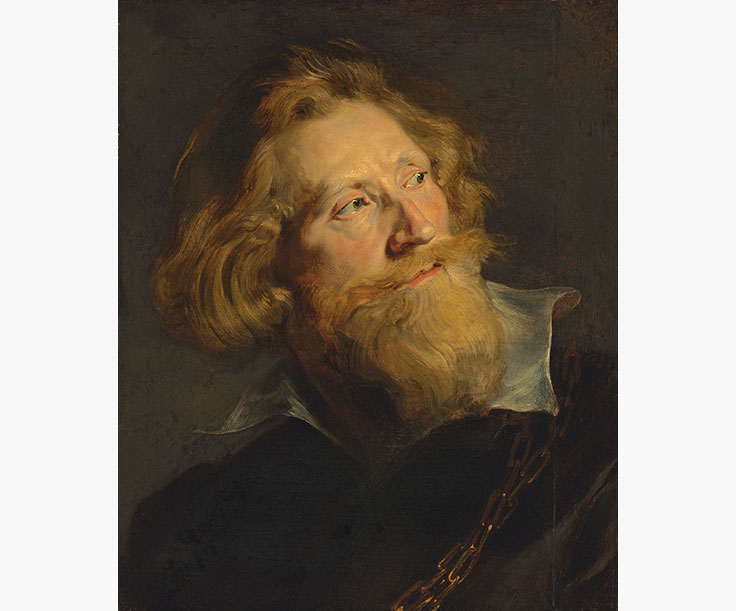
Head of a bearded man, in three-quarter-profile, is an outstanding example of Rubens’s ad vivum portraits( estimate: £2-3 million). Painted circa 1620 on a composite panel, which was typical for studies of this type, it shows the artist’s remarkable skill in modelling features and expressing character with a singular spontaneity and bravura.

The second of the studies, painted on a similar scale but completed at a slightly earlier date, is a beautiful model for Venus and Jupiter,demonstrating Rubens’s masterful delicacy of touch and fluency in execution (estimate: £1.2-1.8 million). Illustrating a story from the first book of the Aeneid, it forms part of a series on the story of Aeneas that Rubens began at some point after 1602. The picture has a particularly distinguished provenance prior to entering the Beit Collection: itf ormed part of the collection of Sir Joshua Reynolds, before being sold in the Reynolds sale at Christie’s in March 1795, and later passing to the Earls of Darnley at Cobham Hall, who owned masterpieces by Titian and Veronese.
DAVID TENIERS THE YOUNGER
The Beit Kermesse by David Teniers the Younger has long been heralded as one of the jewels in his oeuvre (estimate: £1.2-1.8 million). Dating to the 1640s, when he was at the peak of his fame, it is one of the most successful treatments of the artist’s most popular subject, and the only one to be painted on copper. Populated with a great array of characters, it excels in its depiction of anecdotal detail and incident. Its enormous appeal is evident in its stellar provenance, passing successively through some of the greatest French Old Master collections of the 18thand early 19th century, from the Marquis de Brunoy, to Antoine Dutarte, Lucien Bonaparte and the Comte de Pourtales, prior to being acquiredby Alfred Beit (1853-1906) in 1895.
ADRIAEN VAN OSTADE
Adriaen van Ostade’s small scale and wonderfully intimate Adoration of the Shepherds was executed at the very height of his career in 1667 (estimate: £600,000-800,000). It is exceptional in the oeuvreof the artist, being a rare staging of a religious subject, where genre scenes otherwise dominate. It was exhibited in the renowned Art Treasures exhibition in Manchester in 1857, and it too has fine provenance, having once been part of the collection of the Hesse-Kassels, one of Germany’s most prominent families, before being owned by Empress Josephine. This work, like that by Teniers the Younger, was purchased by Alfred Beit (1853-1906) in 1895.
FRANCESCO GUARDI
Dating to Francesco Guardi’s full maturity, the pair of Venetian views are a spirited and characteristically atmospheric treatment of one of Guardi’smost popular and enduring pairings, showing two of the most celebrated sights of Venice: the
Piazza San Marco looking towards the Basilica,
and the Piazzetta,
flanked by two of the great secular buildings of the city, the medieval Doges’ Palace on the left and Sansovino's Libreria on the right (estimate: £300,000-500,000). Painted in afternoon light, on a small format, they are fine examples of Guardi’s late work.
Only seen in public on one previous occasion, when it was exhibited in 1876, the Portrait of Sir Richard Brooke, 5th Bt. (1753-1795) by Thomas Gainsborough, R.A. (1727-1788) has descended through the family of the sitter to the present owner (estimate: £2-3 million). The picture will be included in Hugh Belsey’s forthcoming catalogue raisonné of Gainsborough’s portraits, having never previously been published in any of the monographs written on the artist. Sir Richard is understood to have commissioned the work shortly after he inherited the title and family estates in Cheshire from his father in July 1781. Refined and elegant, the portrait is a superb example of Gainsborough’s bravura draughtsmanship, and presents Sir Richard as the epitome of the sophisticated country gentleman.
Constituting the grandest statement in oil by Richard Parkes Bonington to appear at auction in a generation, and one of the last on this scale to remain in private hands, A coastal landscape with fisherfolk, a beached boat beyond was painted at the height of the artist’s career (estimate: £2-3 million). It displays Bonington’s virtuoso handling of the brush and the subtle observation of light and atmosphere that he had first mastered as a water colourist. The picture belongs to a group of coastal scenes that were celebrated during Bonington’s lifetime and have captivated artists and collectors ever since. These are considered to be among the most beautiful of the romantic period and led Edith Wharton, the American novelist, to write in 1910 that ‘surely he was the Keats of painting.’ The picture reveals the undeniable influence of Turner, whose landscapes Bonington would have seen on his trip from Paris to London in 1825. The following year, 1826, in which the present picture is thought to have been executed, was a key date in Bonington’s tragically short career, marking his debut, to great acclaim, at the British Institution in London; his works were soon much in demand from many of the great Whig patrons of the day, including John Russell, 6th Duke of Bedford, Henry Petty-Fitzmaurice, 3rd Marquess of Lansdowne, and Robert, 2nd Earl Grosvenor. This picture was acquired by Henry Wellesley (1773-1847), later Lord Cowley, the younger brother of Arthur Wellesley, 1st Duke of Wellington, who served as ambassador at Paris.
The Grand Canal, Venice, with San Simeone Piccoloby Francesco Guardi (estimate: £1-1.5 million). Previously unrecorded, this exquisite canvas is an important discovery, exemplifying the captivating, atmospheric qualities for which Francesco Guardi is most renowned. It has been in the possession of the present European family for more than a century and is signed prominently on the left. Datable to the 1770s, the picture is a work of Guardi’s full maturity, when his mastery of vedute painting in Venice was unrivalled. The view is taken from a bustling stretch of the Grand Canal, near to the church of the Scalzi, then the main route into the city from the mainland. Though the present-day scene is somewhat changed, the vibrancy of Guardi’s view is immediately recognisable. He renders the tranquil, shimmering beauty of the city with an incomparable touch, a superb addition to the oeuvre of one of the greatest of view painters.
FOUR MAJOR WORKS BY PIETER BREUGHEL THE YOUNGER |
The sale presents an exceptional selection of four major works by Pieter Brueghel the Younger.
The Kermesse of Saint George (estimate: £2.5-3.5 million) is one of his rarest and most original inventions, entirely independent from any of his father’s works and more accomplished than any of his other original compositions. Including this picture, only four securely autograph versions are known. Georges Marlier, the pioneering Breughel scholar, dated the picture to before 1626-28. He praised it for brilliantly affirming the younger Brueghel’s personality, calling it ‘one hundred percent “Breughelian”, not only for the dramatic rhythms that pervade it, but also in the stylisation of the figures and in the colour harmonies. While maintaining the continuity of Pieter the Elder’s art through these themes, his son Pieter gives rein to his own particular vigour, his own taste for anecdote and his own mastery of his profession that is equal to those of the greatest artists.’
The Kermesse of Saint George (estimate: £2.5-3.5 million) is one of his rarest and most original inventions, entirely independent from any of his father’s works and more accomplished than any of his other original compositions. Including this picture, only four securely autograph versions are known. Georges Marlier, the pioneering Breughel scholar, dated the picture to before 1626-28. He praised it for brilliantly affirming the younger Brueghel’s personality, calling it ‘one hundred percent “Breughelian”, not only for the dramatic rhythms that pervade it, but also in the stylisation of the figures and in the colour harmonies. While maintaining the continuity of Pieter the Elder’s art through these themes, his son Pieter gives rein to his own particular vigour, his own taste for anecdote and his own mastery of his profession that is equal to those of the greatest artists.’
From a European Private Collection, The Birdtrap (estimate: £2-3 million) is a superbly preserved example, painted on a single panel, of what is arguably the Brueghel dynasty’s most iconic invention, and one of the most enduringly popular images in Western art. The Birdtrap is a composition of distinctive poetic beauty: in a hilly landscape, blanketed with snow, a merry band of country folk are skating, curling, playing skittles and hockey on a frozen river, in apparently carefree fashion. Yet there are hidden perils, serving as pertinent reminders of the precariousness and transience of life itself: the fishing hole in the centre of the frozen river is a sign of the dangers that lurk beneath the light-hearted pleasures of the Flemish winter; and to the right of the composition birds surround the eponymous trap, seemingly oblivious to its imminent threat. In this remarkable work, executed with poise and great delicacy, Brueghel delivers a message of lasting poignancy about the fickleness and uncertainty of life.
The other works include The Wedding Feast, which is offered from the property of a European Family(estimate: £1.5-2.5 million). The Wedding Feast is not only one of the most iconic images in the Brueghel canon, it is one of the most famous banquet scenes in the history of Western art by virtue of the prototype, the masterpiece
Peasant Wedding by Pieter Bruegel the Elder now in the Kunsthistorisches Museum, Vienna. The picture offered for sale is one of only four recorded autograph versions by Brueghel the Younger and this will be the first to come to the market since the late 1970s. And the final picture by Brueghel the Younger comes from The Cunningham Collection,
The Outdoor Wedding Dance, dated 1621 (estimate: £1.2-1.8 million).
Peasant Wedding by Pieter Bruegel the Elder now in the Kunsthistorisches Museum, Vienna. The picture offered for sale is one of only four recorded autograph versions by Brueghel the Younger and this will be the first to come to the market since the late 1970s. And the final picture by Brueghel the Younger comes from The Cunningham Collection,
The Outdoor Wedding Dance, dated 1621 (estimate: £1.2-1.8 million).
MORE PROPERTY FROM THE CUNNINGHAM COLLECTION
The superb collection of Dutch and Flemish Old Master Paintings formed by Philip Tracy Cunningham and his wife Lizanne is a remarkable testimony to their passion for the arts and for the Dutch Golden Age in particular. The pictures being offered exemplify the Cunningham’s keen appreciation for condition and quality. Following three lots from the collection which were sold at Christie’s New York in June, the London sale will offer seven stellar Dutch paintings that have been on view at the National Gallery in Washington, D.C. for the past fifteen years. The group is led by an exquisite still-life by Jan Davidsz. de Heem (1606-1684), Grapes, peaches, blackberries, oysters, hazelnuts, and wine in façon-de-Venise glasses on a partially draped stone ledge with a snail, butterfly, and a bee (estimate: £1.5-2.5 million). The other works include a beautifully preserved example of Willem van de Velde II’s treatments of atmospheric Calms(estimate: £600-800,000), The Wedding Dance by Pieter Brueghel II, and cabinet pictures by Dirck van Delen, Jan van Goyen and Nicolaes Berchem.




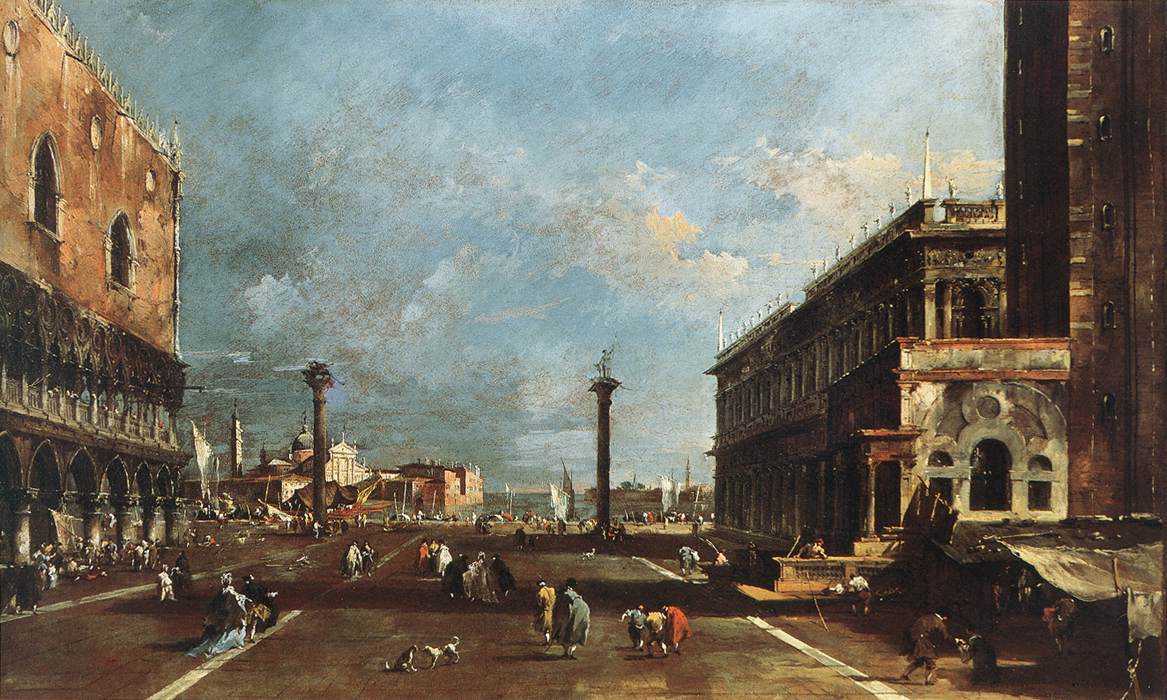
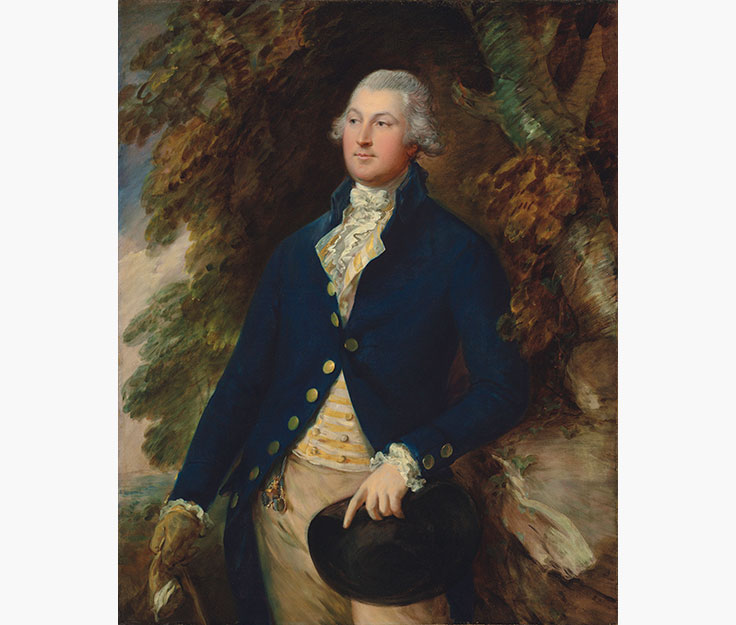
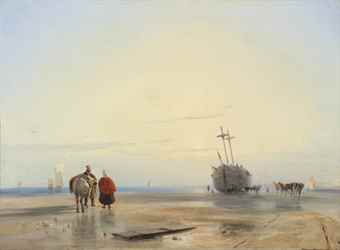




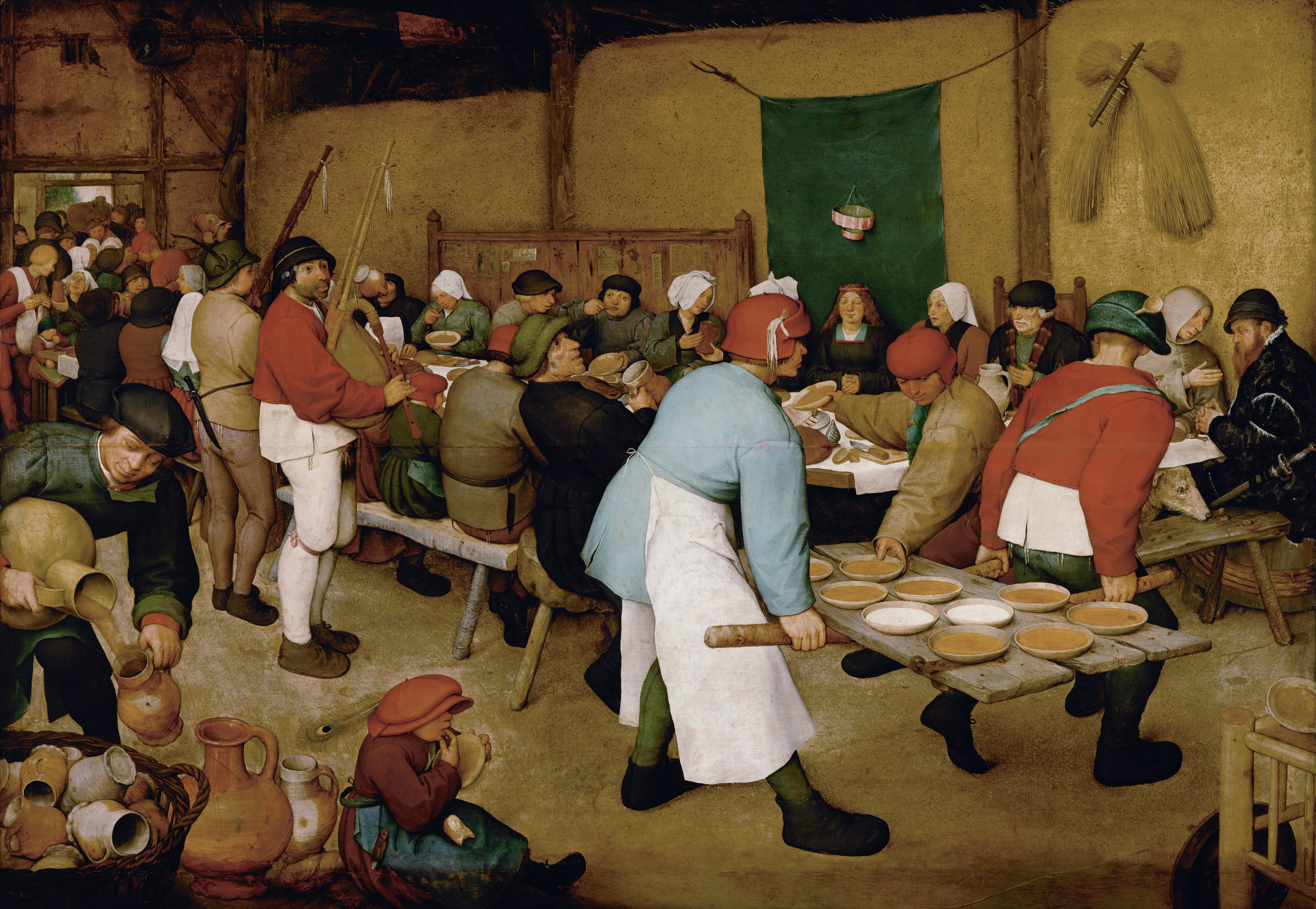
_-_WGA03635.jpg)